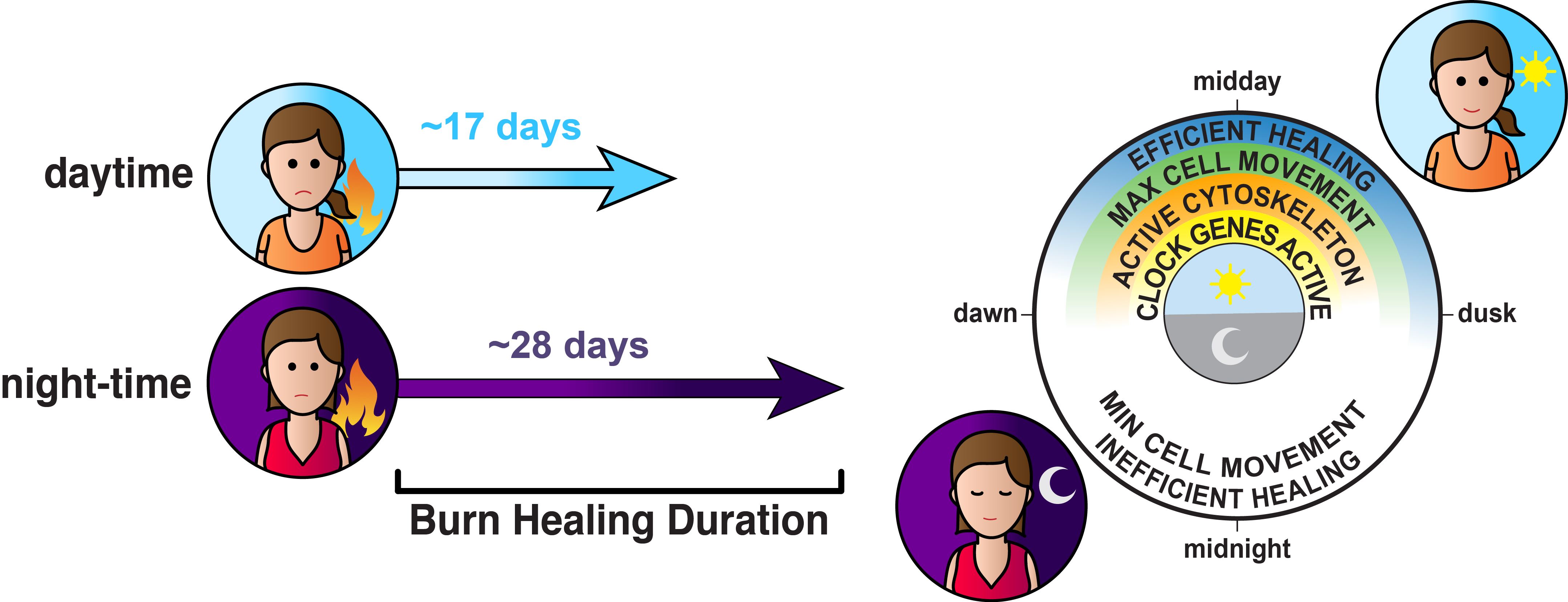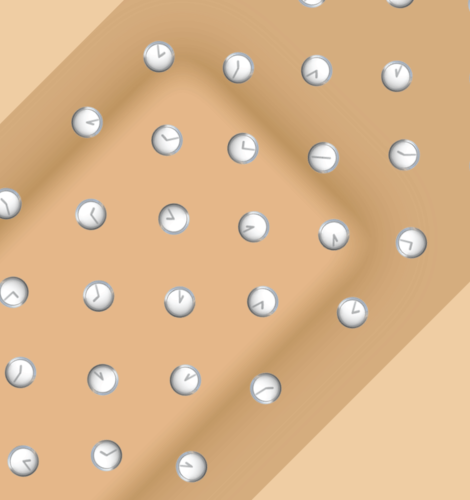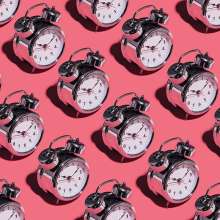Daily cycles in our body clock control how well cells can repair damaged tissue.
A new study shows that there is, consistently, an approximately 2-fold difference in healing speed between day and night time wounds.
This may have implications for medical procedures such as surgery, and provides targets for developing therapies or drugs to improve wound healing.
The study, led by scientists from the Medical Research Council (MRC) Laboratory of Molecular Biology in Cambridge, UK, is published in the journal Science Translational Medicine.
Findings
Our body clocks, or circadian rhythm, regulate nearly every cell in the human body, driving 24-hour cycles in many processes such as sleeping, hormone secretion and metabolism. Disrupting natural night/day cycles has been linked to a host of diseases including cancer and diabetes.
Tests using skin cells – fibroblasts, the most common cell in connective tissue, and keratinocytes - and tests in mice showed that during active circadian phase, wounds healed much more efficiently than during the inactive phase. (Active phase being daytime in humans and night time in mice).
Skin cells move more rapidly to repair the damage if the wound happens during the body clock’s active time. They also deposit more connective tissue into the damaged regions.
Within the cells, quicker healing was driven by the increased activity of proteins involved in cell movement and repair, especially the protein actin. Filaments of actin provide scaffolding and movement, acting like a muscle within the cell.
In active phase wounds, there was also more collagen - the main structural protein in skin - deposited at the wound site, which continued for up to two weeks after the wound occurred.
The observation that at least two major cell types involved in wound healing are circadian-regulated suggests that healing efficiency is influenced by the wounding time.
The researchers also noted that the healing process must be driven by the cells' internal circadian clocks, not signals transmitted throughout the body, since human and mouse skin cells grown in a laboratory dish showed the same effect.
Mirror effects shown in burn patients
Clinical data from the UK Burn Injury Database show mirror effects.
By analysing the records of 118 patients with burn injuries using the database from all major burns units in England and Wales, the researchers found similar effects in patients with burns.
Burns that happened at night took an average of 60% longer to heal than burns that occurred during the day. Night-time burns (8pm to 8am) were 95% healed after an average of 28 days, compared to only 17 days if the burn happened during the day (8am to 8pm).
This is the first time that circadian clock within individual skin cells is shown to control how effectively the cells respond to injuries.
In both cells and mice, we can reset the tissue healing response by tricking the cells into thinking it's a different time of day - such as by turning the lights on at night and off at different times of day for the mice, or using body clock-altering drugs on cells in the lab.
Healing time may be improved by resetting the cells' clocks prior to surgery.“ Dr John O'Neill from the MRC Laboratory of Molecular Biology, senior author of the research, said.
Mean time to achieve 95% healing in 118 burn patients
| Time of burn incidence | Mean time to heal |
| 0000-0359 | 39 days |
| 0400-0759 | 31 days |
| 0800-1159 | 15 days |
| 1200-1559 | 20 days |
| 1600-1959 | 16 days |
| 2000-2359 | 23 days |
| Day/night comparison | |
| 2000-0759 | 28 days |
| 0800-1959 | 17 days |
Wounds that happen during the active phase of the circadian cycle heal more rapidly as cells migrate more rapidly to repair the damage. They also deposit more connective tissue into the damaged regions. Wounds during the dormant phase of the circadian cycle heal slowly.

Note:
The UK Medical Research Council (MRC) is founded in 1913 to tackle tuberculosis. Thirty-two MRC-funded researchers have won Nobel prizes. Their scientists are behind discoveries including vitamins, the structure of DNA, the link between smoking and cancer, the pioneering of the use of randomized controlled trials, and the invention of MRI scanning. http://www.mrc.ac.uk




